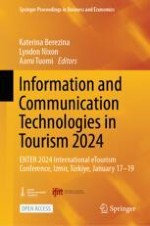1 Introduction
2 Theoretical Background
2.1 Theoretical Foundations: Social Presence Theory and the Theory of Technological Mediation
3 Methodology
4 Results and Discussion
Dimension | Explanation |
|---|---|
Affective | Curiosity (e.g., P10) was the predominant emotion, mainly due to the novelty of the platform, along with laughter or joy (e.g., P3) (possibility of dancing, etc.). Negative emotions also were noted, as frustration and disorientation (e.g., P1) (lack of instructions or technical problems of the platform) |
Cognitive | As it is immersive and realistic, participants consider it to be useful to transmit knowledge in an effective way (e.g., historical representations). Technical improvements are needed. “For knowledge sharing, it is useful if you get people to mimic the environment visually and aurally, it can be close to reality” P4 |
Personal | Some participants selected an avatar similar to themselves (feeling represented by their avatars), but many others chose their avatars without reflecting on it. “The avatar I chose the first time, it is true that I looked for it to represent me, the only brunette girl there was, because it is important to feel represented” P7 |
Social | Participants indicated that they prefer to use the metaverse with more users because it brings more immersiveness and fun. However, in general, they did not feel close to the rest of the users. A possible cause identified is the low embodiment of desktop computers. “I would like to be able to interact with people, I think it’s cool to share it, but there is a lack of tools to be able to feel the closeness of the users” P8 |
Sensory | Some participants noted the vivid colors of the experience. Most, however, did not feel very sensorially stimulated and believe that the metaverse in the future will only be able to stimulate sight and sound, at least when using low embodied devices such as computers. “Reaching the senses is very difficult through a PC screen, there is a long way to go” P10 |
Conative | Participants reported that it is an interesting tool for having pre-experiences of museums and other tourism products. None would use it as an alternative to travel. “I would find it useful, for example, as an experience prior to going, as an advertising tool, it would achieve that ‘WOW’ effect. I see it as a complementary element to travel” P6 |
